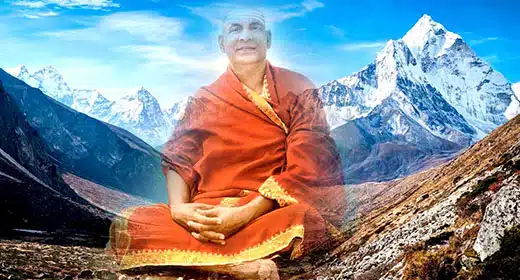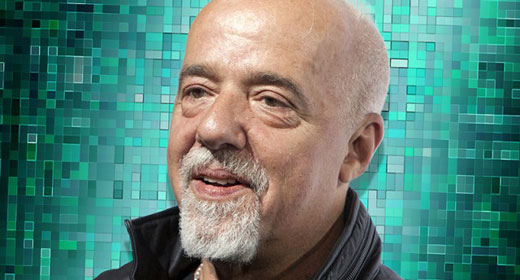Just how important is breathing in yoga? Ed and Deb Shapiro suggest it’s probably more important than most people think….
We all know yoga has hit the U.S. big time as it pops up on TV ads and magazines everywhere. But it was still an unknown entity in the west when Ed trained in the late 1960’s at the Bihar School of Yoga in India and became a Swami. Now yoga is a household name and most people have tried it at least once. And yet it is essentially very misunderstood.
Although some forms of yoga are taught as an energetic exercise, Ed was first taught yoga as a meditative flow of movement. The system of asanas or postures was developed so that each position flowed into the next, as if you were doing an exquisite slow moving dance.
But the true value of this ancient system may be elusive. Yoga is not just about standing on our head or bending in all sorts of contorted positions. It is the uniting of body, mind, and spirit, encouraging a full experience of the intricate relationship between them and how to bring this relationship into balance. Ultimately, yoga is about self-realization, true freedom, where the individual self merges into the universal self.
The effect of yoga develops over a period of time, subtly changing the way we move, think, feel and behave. It helps us recognize our resistances and go beyond them. Without pushing or straining, we breathe and move through a posture, simultaneously watching the mind going beyond its own limitations.
Bringing awareness to our movement allows us to inhabit our body and the postures with greater consciousness and ease. However, without understanding the vast power of the breath, yoga as it is often taught, becomes just an exercise, even if it is a wonderful one.
When we breathe into the posture the body opens, lets go and relaxes. The key to yoga movement is bending the spine backward and forward, as that is where we hold the most tension that causes us stress and a variety of physical problems. But without the breath, which is the core of yoga, then it can become very mechanical.
The breath is the entry point to the body, so watching the flow of the breath brings our attention inward, enabling external distractions to drop away. It focuses our attention and deepens awareness as we do each yoga posture, creating a meditation in action. All we have to do is follow each breath as it enters and leaves, bringing the breath, mind and body together.
The rhythm of the breath is like a mirror, reflecting our every mood, feeling and emotion. Fast and shallow breathing occurs when we are stressed, panicky, fearful or anxious; hard and rapid breathing accompanies anger and rage; gulping breaths reflect great sadness; while gentle deep breathing reflects a quiet and calm mind. Just by changing the rhythm of our breathing we can change our mood.
When pressures are building and demands become overwhelming, the breath becomes progressively more shallow and rapid until we are only breathing into the top part of the lungs. People who are severely stressed will breathe in this shallow way most of the time. When we bring the level of breathing down from the upper chest we will immediately be reducing the level of stress in the body.
Yoga breathing is known as pranayama. There are a variety of methods for different purposes. Try this for yourself:
Sit with a straight back. Close your eyes and for a few minutes breathe only into the upper chest, just below your collarbone. This means your breathing will be very short and shallow. Watch what emotions arise in you as you do this.
Now breathe into your lower chest just above your diaphragm. This is where most of us breathe if we are not stressed or upset. Watch how you feel breathing here for a few minutes.
Now bring your breath all the way down into your belly — focus on an area about an inch below your belly button. This will mean much longer, deeper, slower breaths. It is not a place where you breathe normally but is used for deep relaxation and meditation. See how you feel breathing here. If you find this difficult then try doing it lying down so your diaphragm can relax and the lungs open more fully. You can also silently repeat “soft belly” as you do this to relax your belly muscles.
Now we will put all three levels together. Sitting with a straight back, breathe in slowly filling first your upper chest, then the middle chest, and finally the belly. Then breathe out slowly first from the belly, then the middle chest and finally the upper chest. Do this at least three times.
Now reverse that circle, by firstly breathing into and filling the belly, then the middle and then the upper chest. Then slowly release from the upper chest, middle chest, and finally empty the belly. Do this at least three times and relax.
Changing our breathing patterns and bringing conscious awareness to our breath will quickly bring our mind into a peaceful and still place. We can focus on our breath at any time, anywhere, so that it becomes a true friend.
How do you breathe? Is it stressful or peaceful? Do comment below. You can receive notice of our blogs every Tuesday by checking Become a Fan at the top.
Ed and Deb Shapiro are featured bloggers at Oprah.com, HuffingtonPost.com and AWAKEN.COM. See their award-winning book:BE THE CHANGE, How Meditation Can Transform You and the World, with forewords by the Dalai Lama and Robert Thurman, with contributors Jack Kornfield, Jon Kabat-Zinn, Jane Fonda, Ram Dass, Byron Katie, and many others. They also have 3 meditation CD’s: Metta—Loving kindness and Forgiveness; Samadhi–Breath Awareness and Insight; and Yoga Nidra–Inner Conscious Relaxation.









































